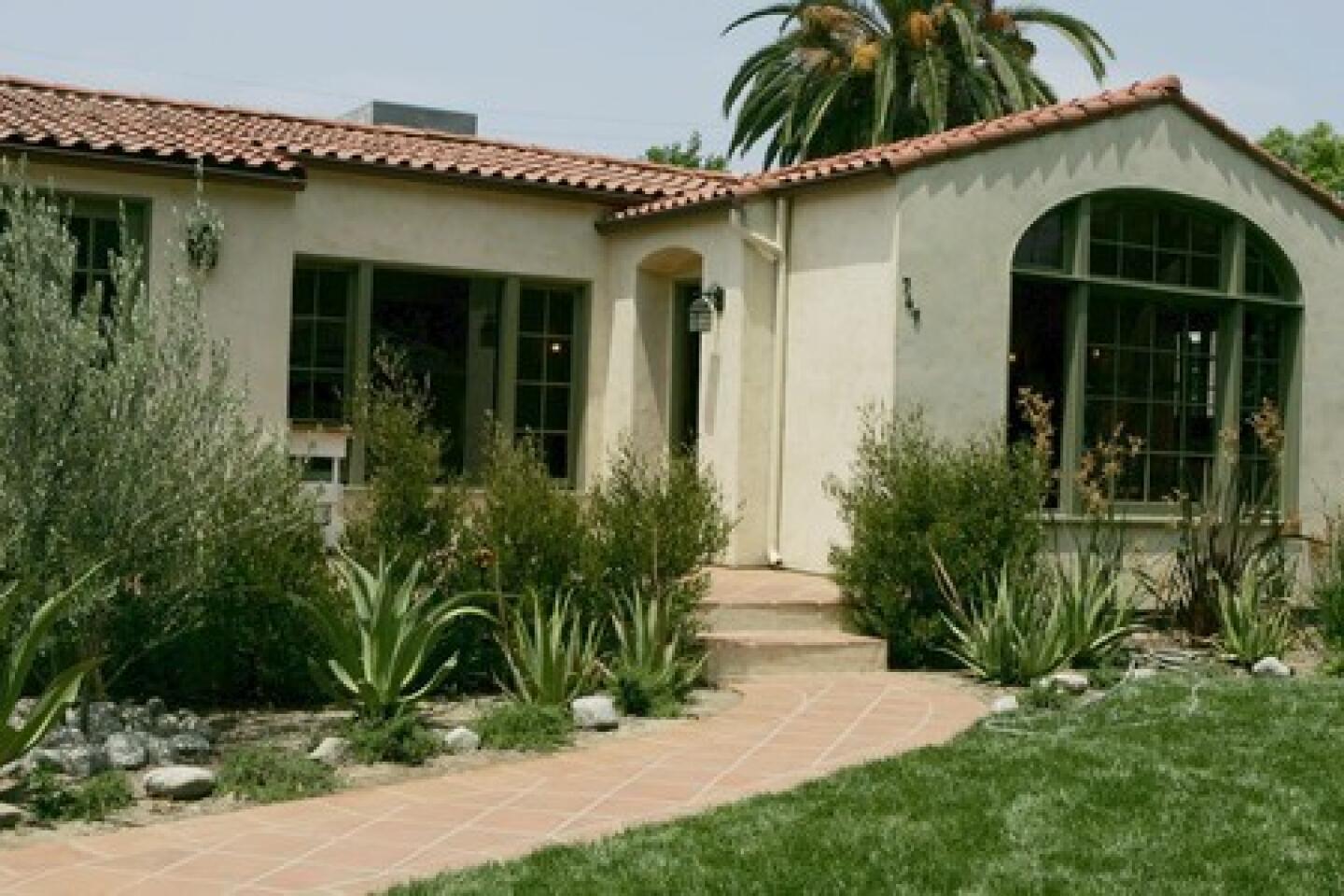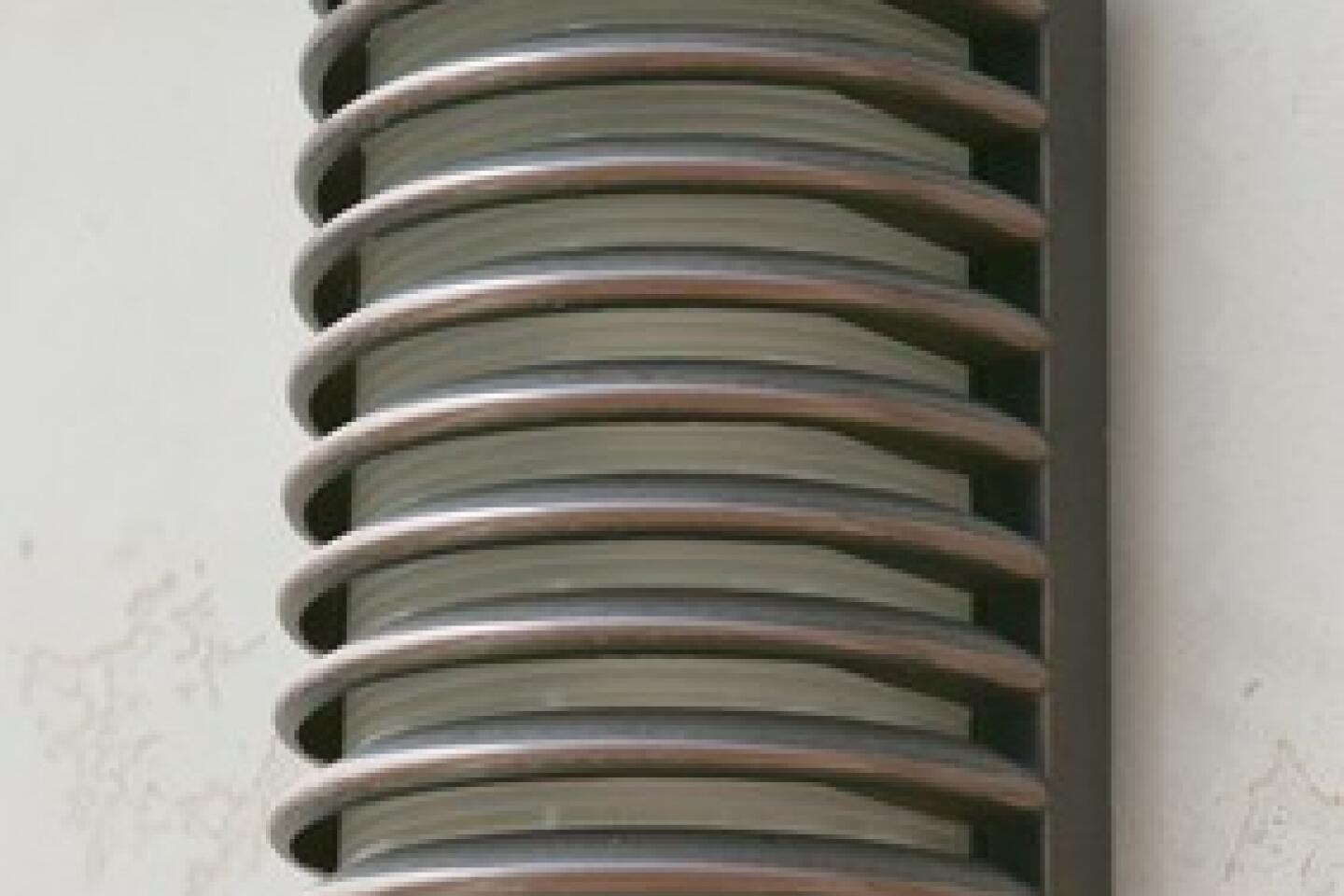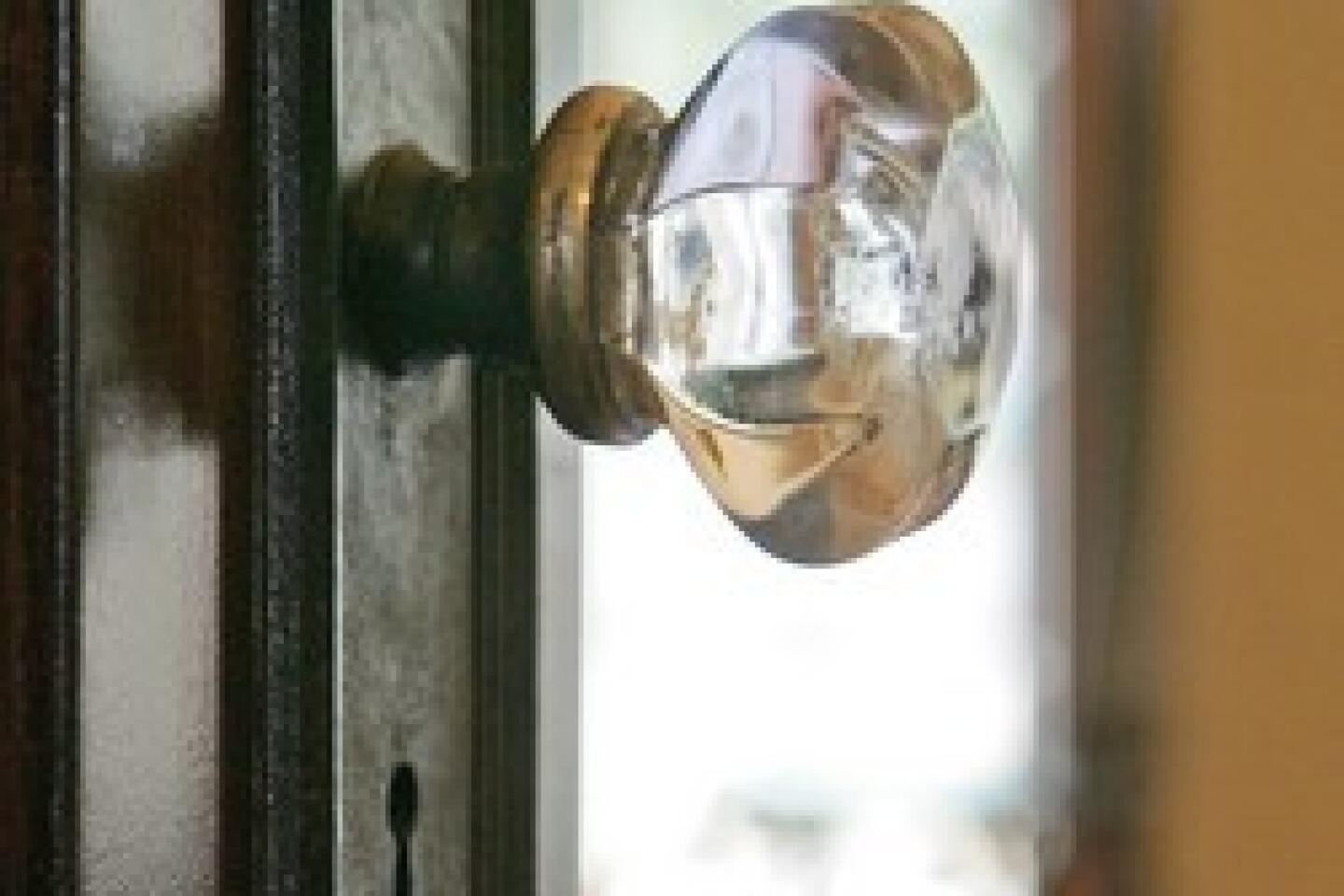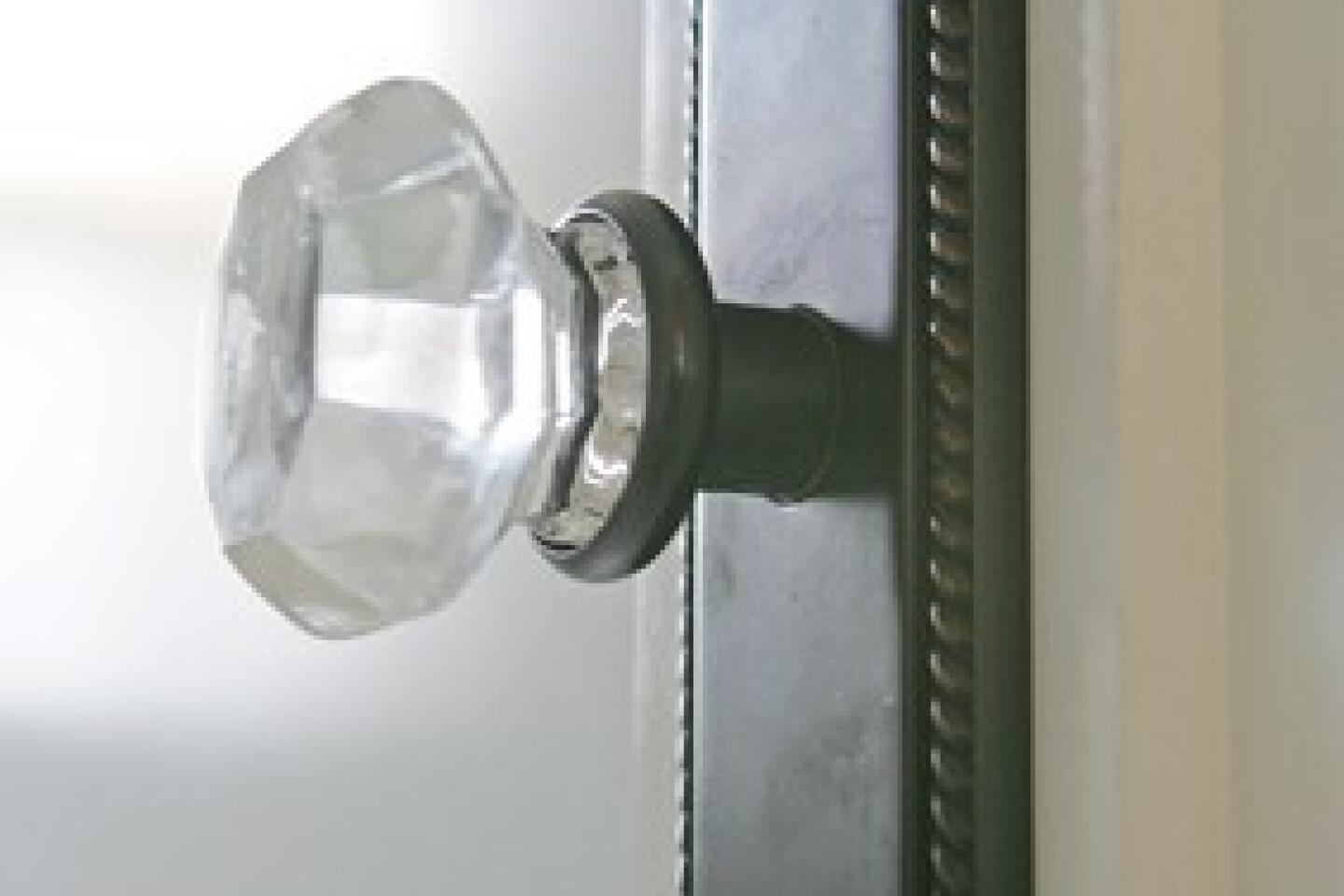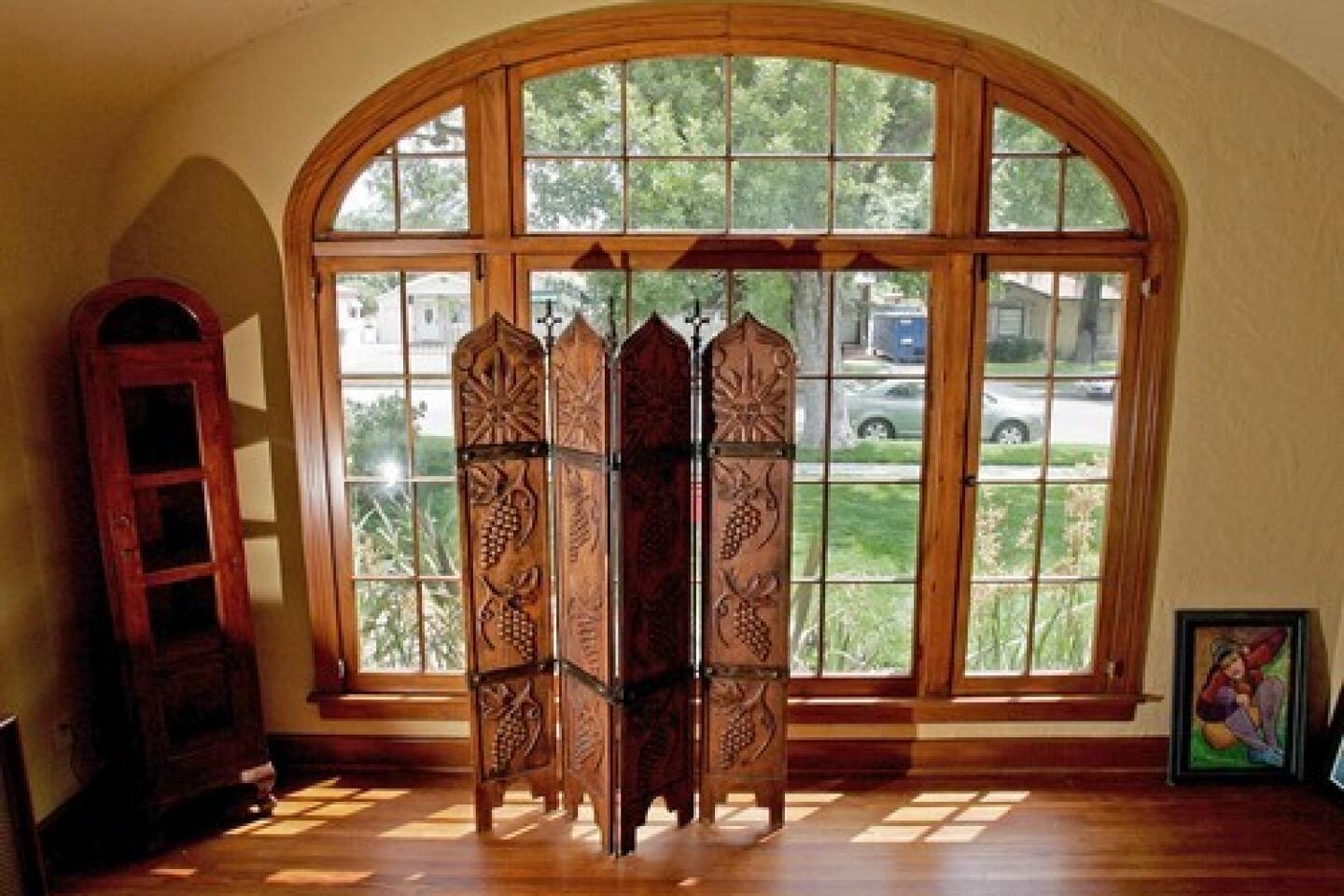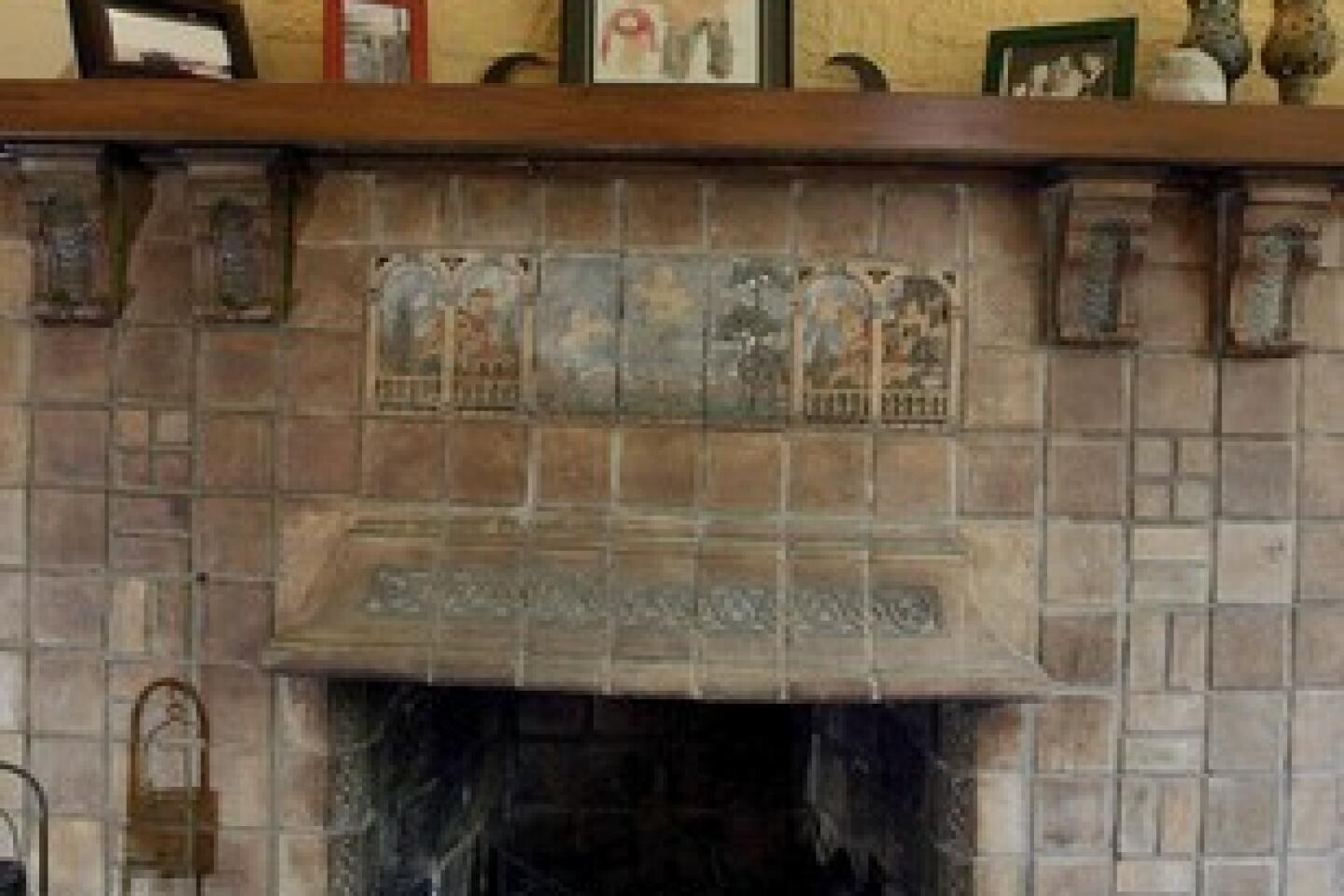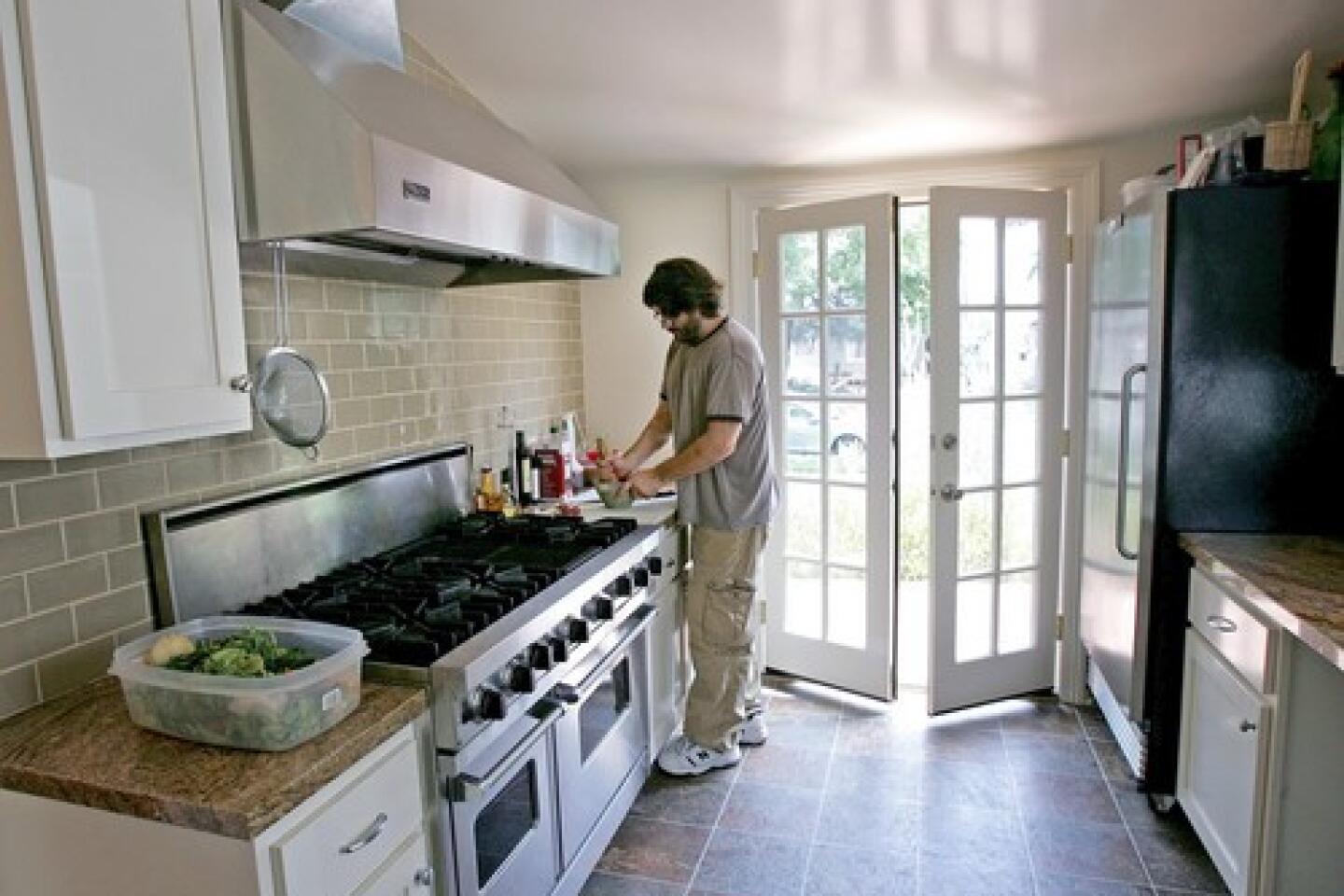Rebuilding a home after a fluke flood
- Share via
Three days before Christmas 2006, as chef Matt Beville was sliding a tray of pastries into the oven at work, he had no idea events were unfolding at his 1924 Burbank home that would displace him for 18 months and lead to a $209,000 whole-house remodel.
The first sign of trouble came when a neighbor called to say that a roofing truck had backed over the fire hydrant in front of Beville’s house and a geyser had sprung up. Beville, who is 42 and bought the house when he was 27, recalled saying: “That’s cool. I wish I could see it.”
A series of follow-up phone calls from the neighbor suggested -- with increasing intensity -- that Beville should come home. When told that water shooting from the sheared hydrant was falling on his house, he thought about the pastries in the oven, which were for a catering job, and asked if the neighbor could shove some towels up against the door sills.
But towels would be useless against what would happen next, which was witnessed by neighbors and later recounted by them to a local TV news station, which aired a report.
A sort of sink hole developed underneath the hydrant, causing it to tilt toward Beville’s house and point nearly its full gusher onto the flat roof covering the rear of the structure. Falling inside parapet perimeter walls, which stood a few feet above the roof, the water collected into a pool that became heavier and heavier until, all at once, it crashed through, into the house, and forced its way out through doors and windows, taking out some walls.
Beville still remembers the final call from his neighbor: “The side of your house just blew out.”
To begin the repair and rebuilding process, he met with an insurance adjuster and received a list of contractors. He hired one to demolish the rear of the house, which had the most damage. But Beville wanted to find a contractor with a sensitivity to older homes. After asking friends for recommendations, he met and decided to work with Burbank contractor Mark Bethanis on the rest of the project.
“It was a disaster,” Bethanis said of the home. Even though he’s a fan and restorer of older homes, he thought this one might be beyond salvage. “If Matt had more of a budget, I would have told him to tear it down.”
However, the insurance company would not pay for a total rebuild. The first offer was for $126,000, then was raised to $157,000 after Bethanis and Beville pointed out mistakes they said the inspector had made, and then finally to $175,000. He paid for the remainder of the remodel out of his own pocket.
But even if he could have afforded it, Beville probably would not have torn down the house.
“I love my place,” he said, pointing out the Spanish-style home’s hardwood floors, moldings, barrel ceiling in the living room, arched French window and fireplace covered with vintage Batchelder tile.
Plus, he had come to love his neighbors, and Burbank itself. “Where could I go and get all this?” he asked.
Beville’s main goal was to rebuild the back of the house in a vintage style compatible with that of the front, and to repair the front portions that had been damaged. And, as long as he was at it, remodel the kitchen.
Haggling with the insurance company took months, and because the first contractor had removed the home’s power panel along with the damaged walls, there was no electricity to run the filter on the backyard pool. The water turned a deep green and ducks moved in.
During the months of waiting, the homeowner and the contractor planned the remodel. Although the 1,360-square-foot home had only one bathroom, situated between the two bedrooms, it was big enough to split into two and turn the master bedroom into a master suite.
Other improvements included bolting the frame of the house to the foundation to give it more stability during earthquakes and adding panels to the walls for the same purpose. The whole roof was rebuilt, with the original clay tiles in the front part of the house put back into place. The exterior was replastered, new gutters were installed, and new landscaping was planted.
To save money, Bethanis installed lower-cost vinyl windows, rather than top-of-the-line wood ones, but he added the full array of moldings, sills and skirts to match the originals.
“It’s kind of a nice compromise,” Bethanis said. “You want it to look old and function new.”
He had new doors made to match the older ones and added crystal-like knobs and metal back plates. For comfort, forced air conditioning and heating were added too.
Bethanis took a lead role in the design and construction of the house, while Beville worked at his job at Canelé restaurant in Atwater Village. Beville recalled the comforting statement his contractor often made: “We can make it work.”
In the kitchen, Beville had been happy with the original knotty pine cabinets. But the wall they were attached to got saturated during what he has come to refer to as “The Great Flood of ‘06,” and the cabinets could not be saved. So the whole room was gutted and reconfigured around Beville’s prized Viking stove.
Although Beville had a few panic attacks about the colors and materials for the kitchen, he’s pleased with how it turned out. The room now has custom-made Shaker-style cabinets, granite counters and a backsplash of sea-foam green subway tile. The floor looks like slate, but is really sheet vinyl, which is easier for the active cook to keep clean.
Beville, who had been living in a rented apartment, moved back into his house in April. While giving a tour of his house recently, he punched and rolled out dough for pizza as two buddies watched sports on TV in the living room.
After the negotiations with the insurance company were complete, Beville said he started to feel better about the whole thing, but the experience is still bittersweet.
“Am I happy with what happened?” he asked. “No. Am I happy with the end result? Yes.”
Price-Robinson is a freelance writer.
More to Read
Sign up for Essential California
The most important California stories and recommendations in your inbox every morning.
You may occasionally receive promotional content from the Los Angeles Times.
